Loons, Monarchs and Knotweed

Update on the Loons
Fall mornings are a wonderful time for quietly exploring the Lake. Looking for loons on a cool, foggy morning can be challenging…
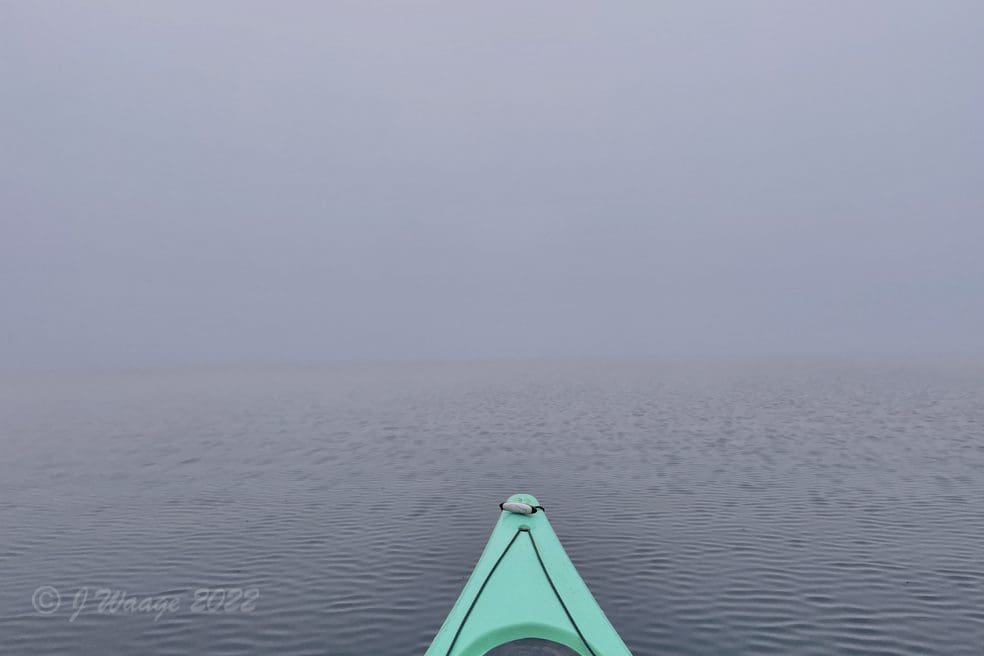
They have their favorite fishing spots and soon Mom and Prosper appeared at one of them.

They both are looking fine. Mom was easy to identify with her missing wing feathers – taken for testing when she was rebanded. They will grow back after she gets to the ocean for the winter.

As the fog begins to lift we get a better look at Prosper.
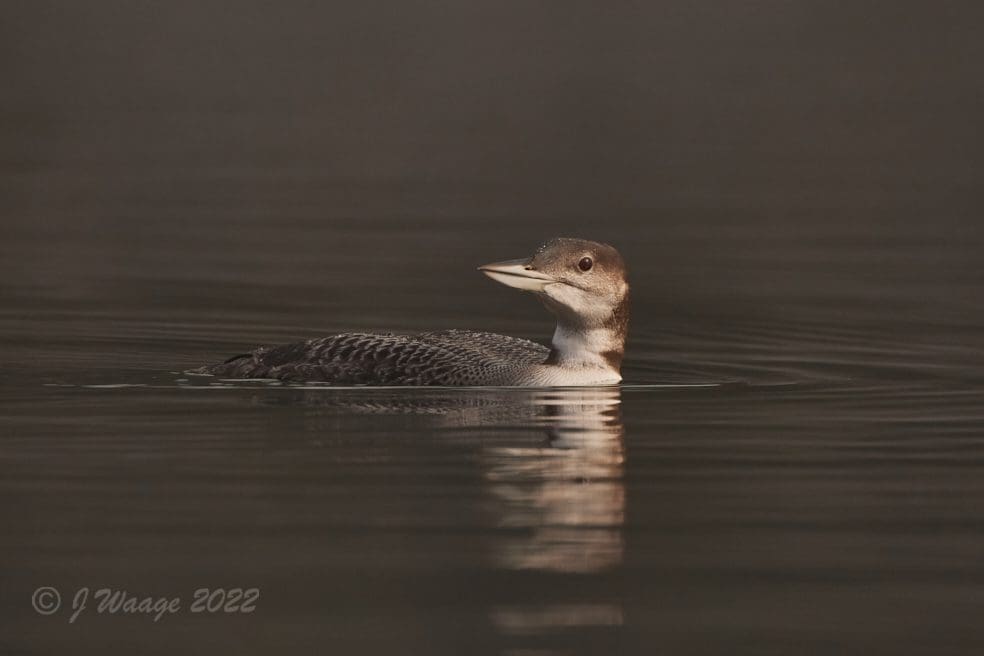
I have seen Prosper come up from a dive with a fish, but begging from parents is still the main source of food.

The adults are starting their winter molt, first visible around the face. As we near the end of the season, it is very satisfying to see our old female back in action with yet another well fed chick.

Monarchs on the Move
We have enjoyed seeing lots of Monarchs in our yard. A few have recently emerged and are beginning their migration to Mexico.

Sadly the migratory sub-species of the Monarch Butterfly, the ones we see around here, is now listed as Endangered by the Union for the Conservation of Nature (IUCN). One reason for their astronomical decline in recent decades has been loss of overwintering habitat in Mexico. However, the main reasons are pesticide and herbicide use and loss of breeding and feeding habitat throughout North America.
We can help to prevent this glorious creature from becoming extinct. That means providing more food plants for the caterpillars and lots of nectar plants for the adults.
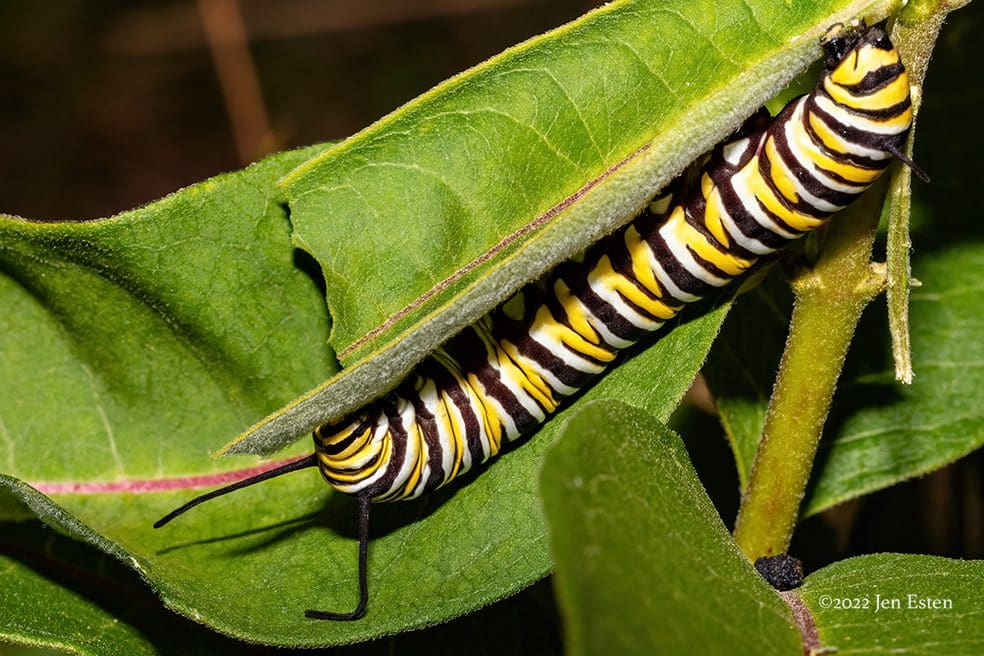
Monarch caterpillars are completely dependent on Milkweed. There are over 30 species of the Milkweed genus Asclepias in the US, but Common Milkweed (Asclepias syriaca) is the one we usually find in New England.
Other insects also depend on it. You will usually find Red Milkweed Beetles, Milkweed Tussock Moth caterpillars, Milkweed Bugs and Milkweed Aphids in a patch of Common Milkweed. All sequester Milkweed toxins and share the warning coloration of Monarchs.

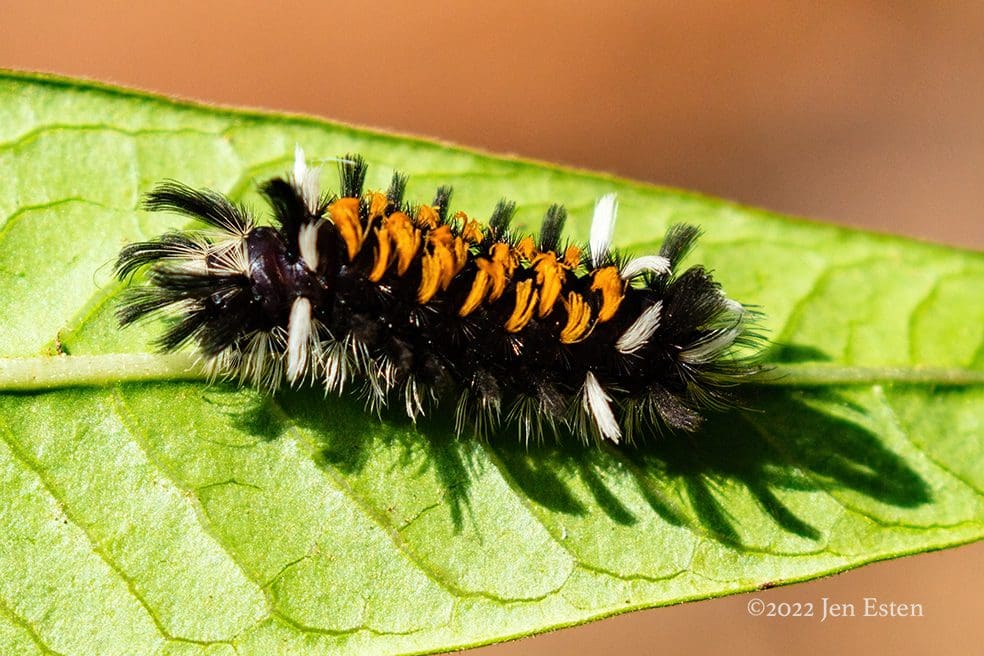


Common Milkweed is the Monarch’s preferred host plant, but if you don’t especially want it in your garden, a good option is Butterfly Weed (Asclepias tuberosa). It has smaller leaves and orange flowers and is native to New England. Even though less preferred as a host plant, it provides nectar to Monarch adults.
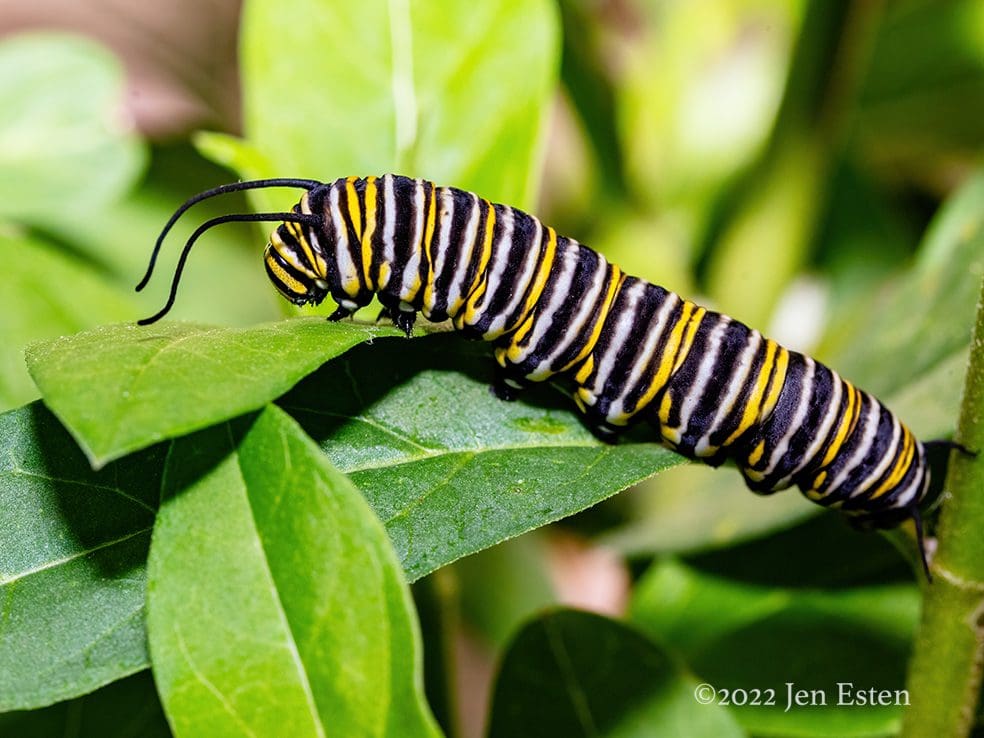
We have both Common Milkweed and Butterfly Weed in our yard and Monarchs have laid eggs (below) on both species.
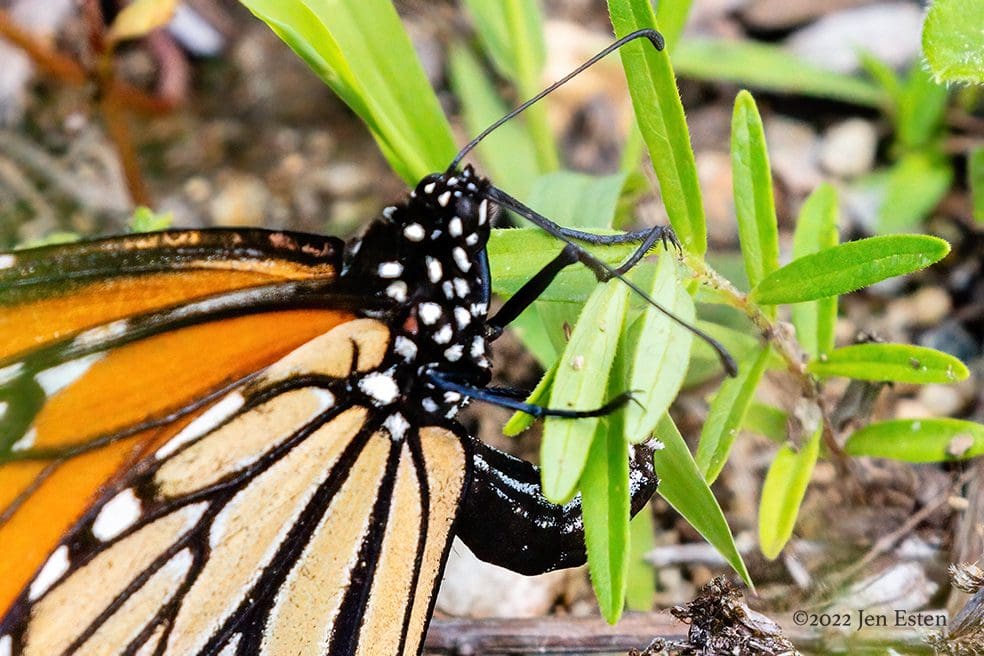
Our reward is to watch these beauties grow, pupate and become adults. A caterpillar about to pupate will attach itself to the underside of a leaf with silk and curl up.
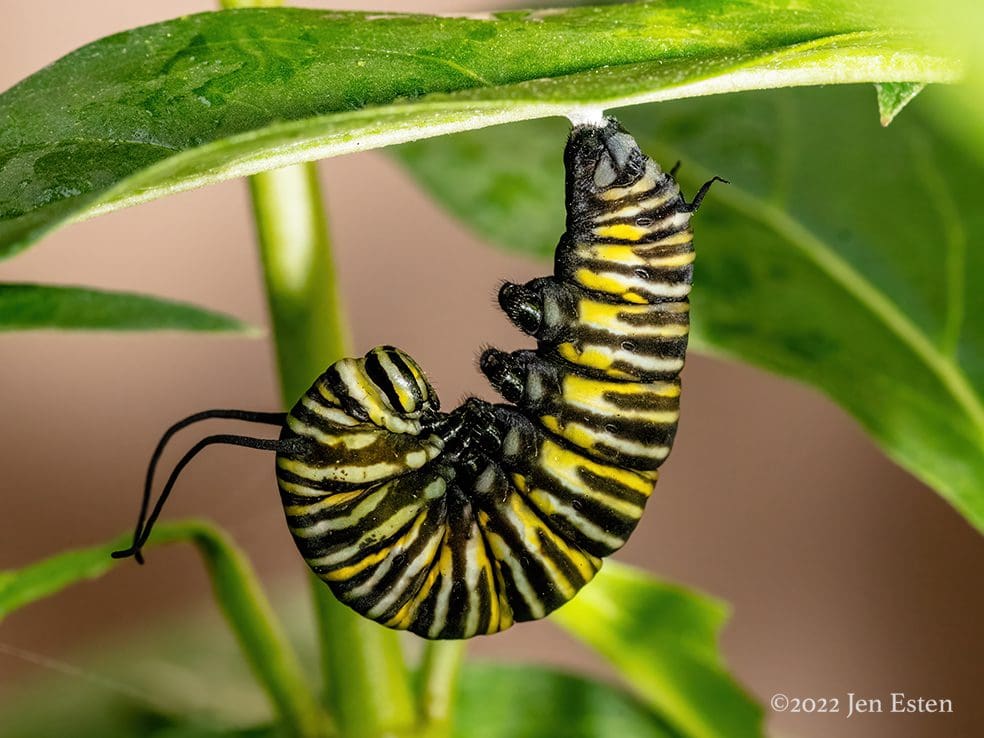
Then it sheds its skin and transforms into the chrysalis stage. At that point the body of the caterpillar rearranges into the body of an adult. That process takes a week or two.
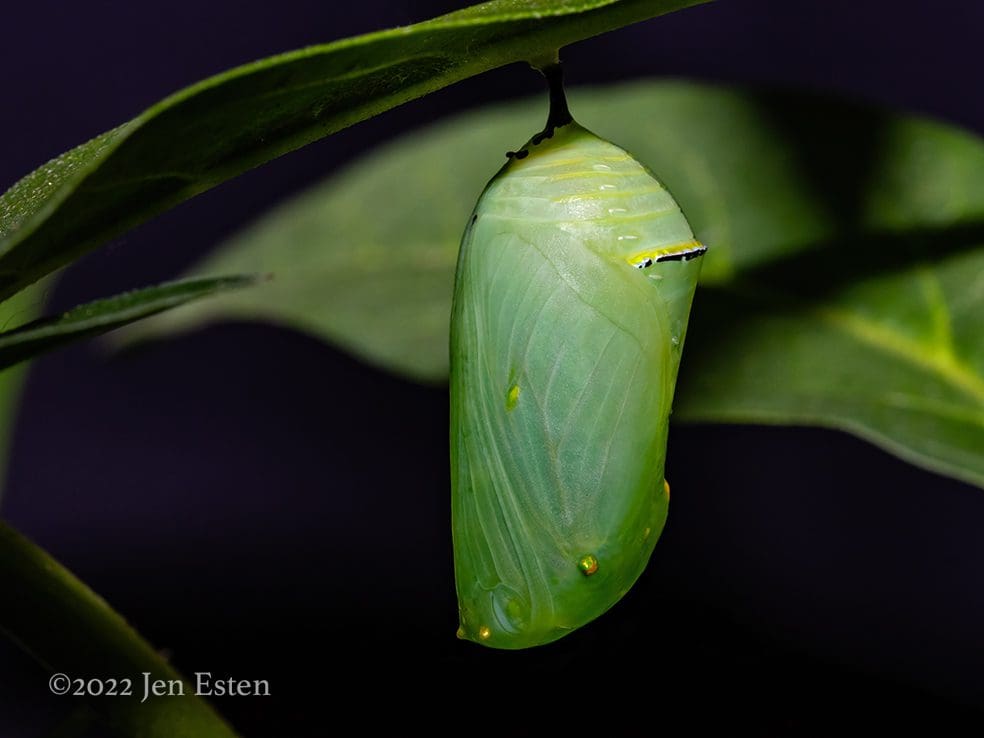
Just before emerging, the chrysalis becomes clear and the adult’s wings can be seen.

At this point, patience and good timing might allow you a chance to observe the adult emerge, pump up its wings, dry off, and fly away.

Butterflies, including Monarchs, also need nectar sources for their migration – native fall flowers like Joe Pieweed, Goldenrod and Asters, as well as Echinacea and other late blooming perennials are essential to fuel their travel.
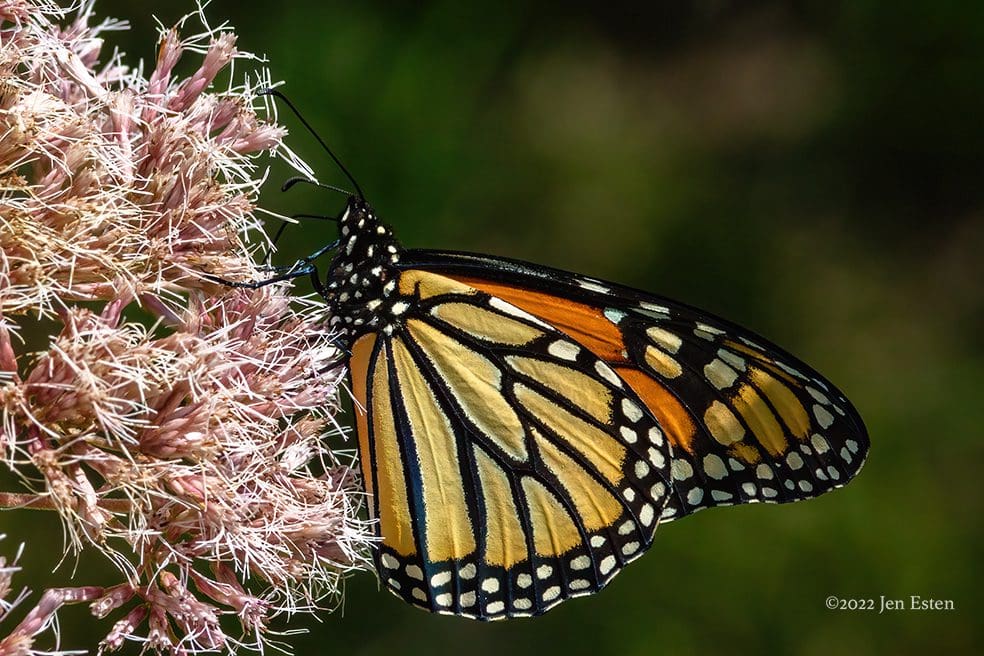
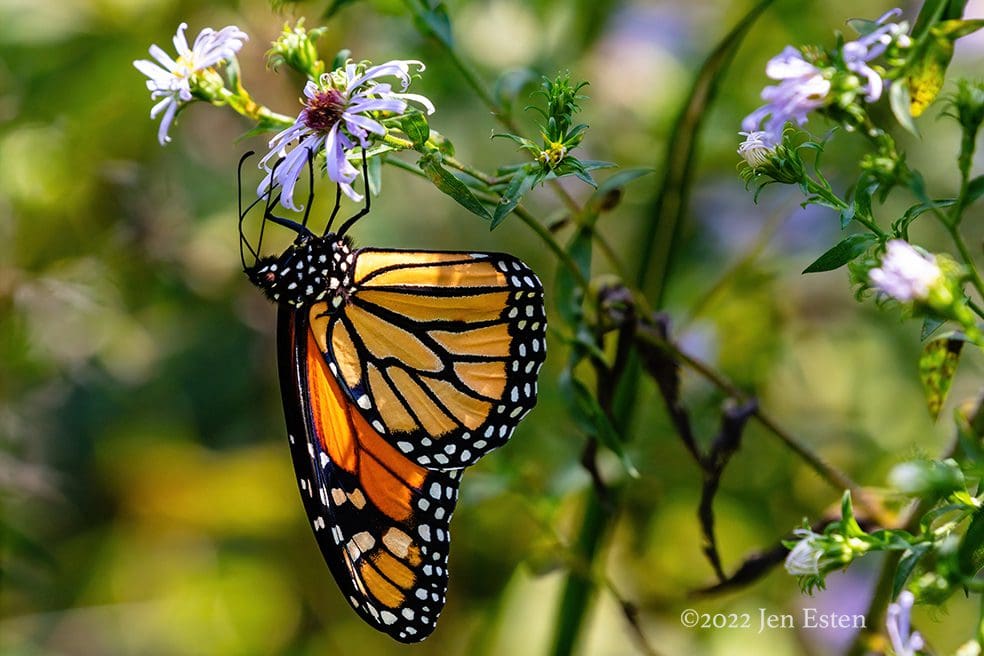
Monarch Migration Overview:
In late summer and early fall, Monarchs east of the Rockies migrate up to 3,000 miles to central Mexico where they shelter for the winter.
In March, they begin migrating northward, mate, and lay eggs in southern states. Having lived for up to 9 months they die. Their offspring continue the migration north in April and May, but as adults they only live about 2-6 weeks. The adults of the second generation continue to move northward, and it is usually them or adults of a third generation that we see mating and laying eggs here.
Those eggs will become the Monarchs that migrate back to Mexico. Emerging in mid August and into September, they do not mate or lay eggs here. Instead, they begin their long migration back to Mexico. How the great and great-great grandchildren of the Monarchs that overwintered in Mexico last winter get back to that same small overwintering area in is a puzzle still being worked out.
More information about Monarchs, providing host and nectar plants, and their migration can be found at Monarch Joint Venture.
If you have an area of your yard or have access to a field nearby, planting milkweeds and nectar plants will be helping in the effort to save these remarkable butterflies.
Controlling Knotweed
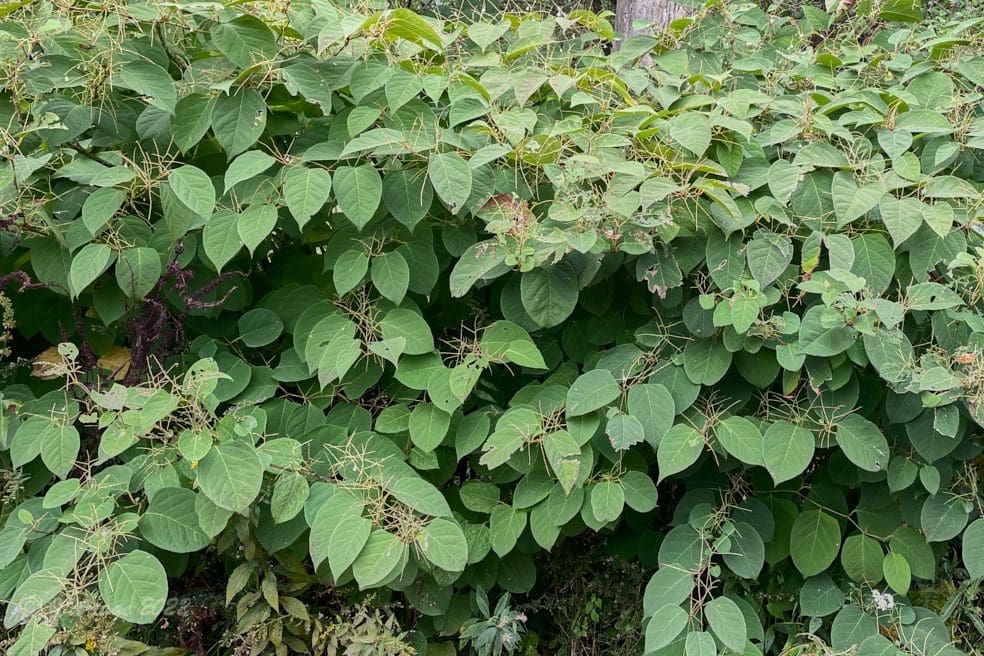
The PLPA would like to remind you that early Fall is a great time to identify and help eradicate Japanese Knotweed. Around the Lake, its flowers are fading (above) and local pollinators (below) are no longer using it for food.
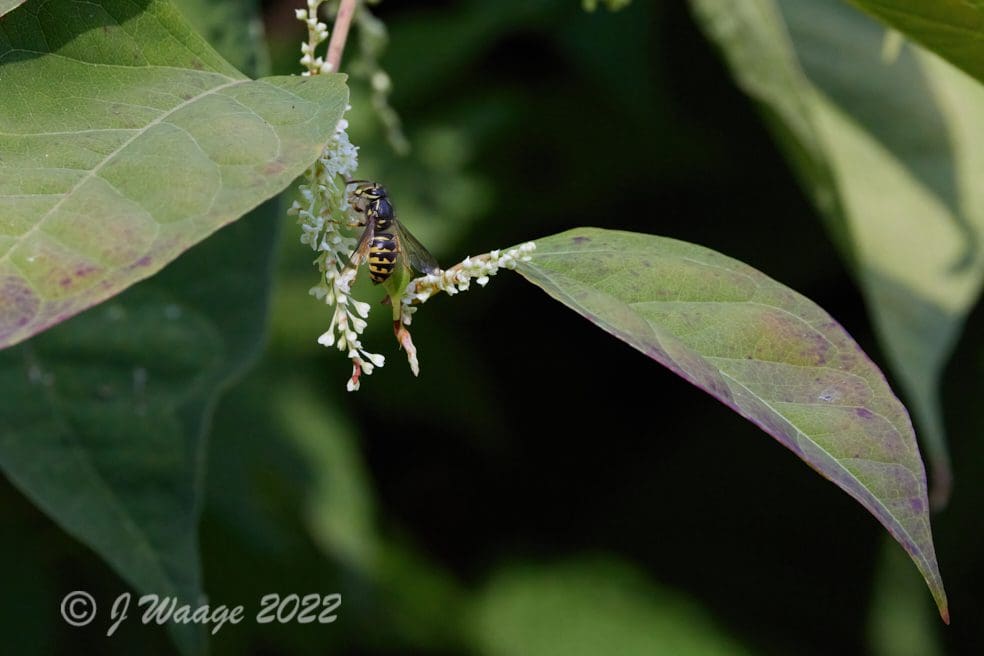
One of our most damaging weeds, it is a prohibited invasive in NH. That means “no person shall collect, transport, import, export, move, buy, sell, distribute, propagate or transplant any living and viable portion of any plant species, which includes all of their cultivars and varieties” (Agr 3802.01(b)).
Knotweed can cause damage to home foundations, roads and septic fields. It is very difficult to control because its roots can grow 10 feet deep and 40 feet laterally and it can resprout from fragments and cuttings as small as half an inch. That means weedwacking it or pulling it out is more likely to spread it than control it.
Unfortunately, the most effective control is chemical and early fall is the best time to do that. Shortly before the season’s killing frost is a good time for treatment. Or you can find it now and get after it in the late spring when it starts to grow. The links below will help you identify and control this very invasive weed:
PLPA Website
New Hampshire Department of Agriculture
Please let neighbors know if you find it on their property and pass along the information above, or this newsletter. Thank you.
Bye for now
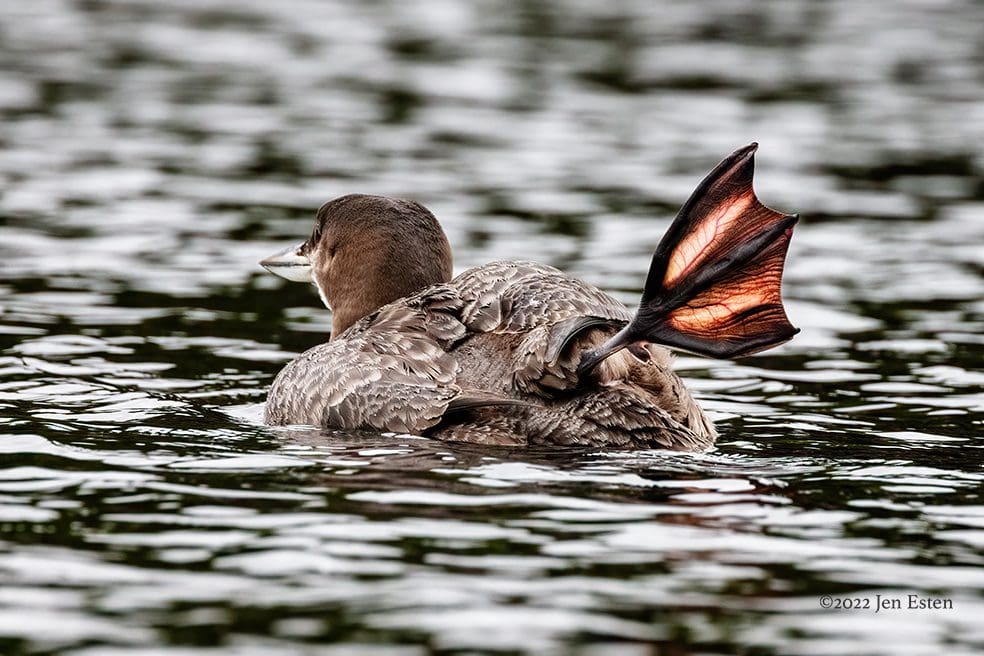
To be continued… Jon and Jen
Text and Photographs by Jen Esten and Jon Waage
